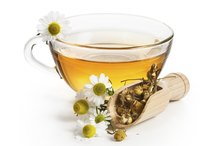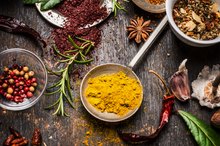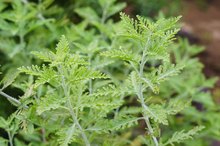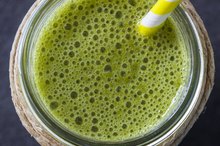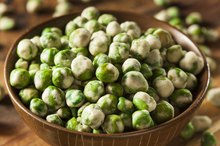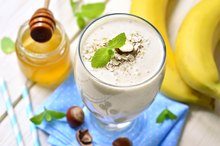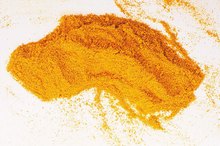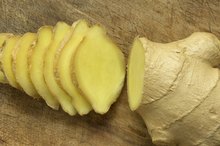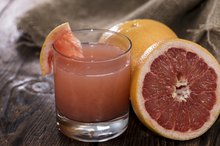Is Ginger an Herb or a Spice?
Ginger originated in China, where its function as a significant medicinal and culinary ingredient has been valued for thousands of years. Herb or spice -- the term used to describe ginger may seem like nitpicky semantics. Ginger appears on the herb list of the University of Maryland Medical Center website. It appears on the spice list of the UCLA Medicinal Spices website. However, despite the arbitrary terminology upheld by numerous agencies, particular characteristics categorize a plant as one or the other -- and ginger root is a spice.
Botanical Source
Ginger's classification as a spice partly stems from its botanical nature. Plant experts consider plant roots used medicinally or culinarily spices. Other parts classified as spices include flowers, fruits, seeds or bark. Technically, herbs come from the leaves of nonwoody, or herbaceous, plants, according to Iowa State University 2.
- Ginger's classification as a spice partly stems from its botanical nature.
- Other parts classified as spices include flowers, fruits, seeds or bark.
Potency
Herbal Beta Blockers for Anxiety
Learn More
Spices, such as ginger, provide concentrated, strong flavors compared with herbs. Consequently, medicinal prescriptions and culinary recipes recommend smaller amounts. Spices occasionally behave as preservatives along with their flavor function. Herbs add savory flavors to meals, and their uses require larger quantities.
- Spices, such as ginger, provide concentrated, strong flavors compared with herbs.
- Spices occasionally behave as preservatives along with their flavor function.
Geography
Spices typically originate in tropical climates. Herbs grow in temperate regions such as England, France and Italy. Ginger root comes from southern China, which has a hot climate during the summer months. Most spices originated in the Spice Islands of Indonesia.
- Spices typically originate in tropical climates.
- Most spices originated in the Spice Islands of Indonesia.
Dual Classification
What Herbs to Use for Blocked Fallopian Tubes
Learn More
In rare cases, both classifications apply to one plant. The herb cilantro originates from the leaves of Coriandrum sativum. The same plant produces the spice coriander, derived from the seeds. The herb dill comes from the leaves of Anethum graveolensare. The spice dill seed comes from the fruit.
- In rare cases, both classifications apply to one plant.
- The spice dill seed comes from the fruit.
Related Articles
References
- The Herb Companion: What Is the Difference Between an Herb and a Spice?
- Iowa State University: Horticulture and Home Pest News: Herbs vs. Spices
- Beneficial Effects of Spices in Food Preservation and Safety - PubMed
- Health Benefits of Culinary Herbs and Spices - PubMed
- Health Benefits of Culinary Herbs and Spices - PubMed
- CPG Sec 525.750 Spices - Definitions | FDA
- Food Product Dating
Writer Bio
Based in Richmond, Va., Tara Carson has written articles for editorial and corporate online and print publications for more than 10 years. She has experience as an adjunct professor of nutrition at Northwest Christian University and holds a Bachelor of Science in journalism and nutrition from Virginia Commonwealth University.
